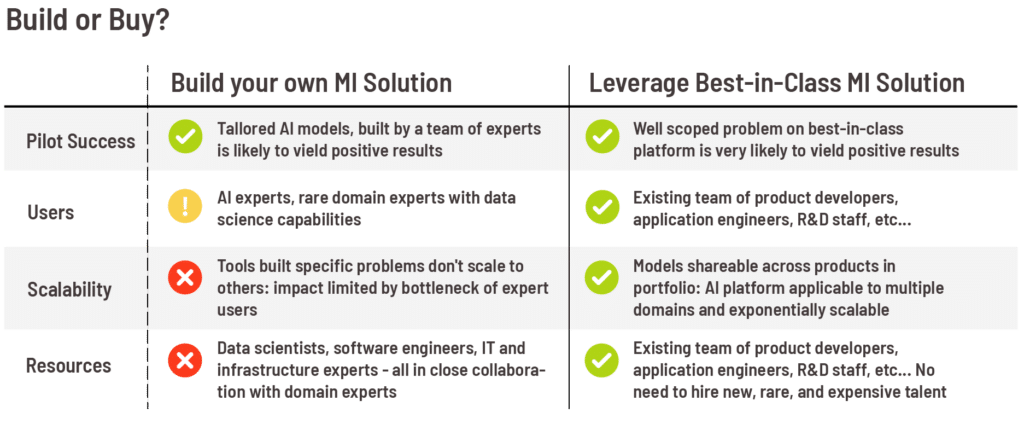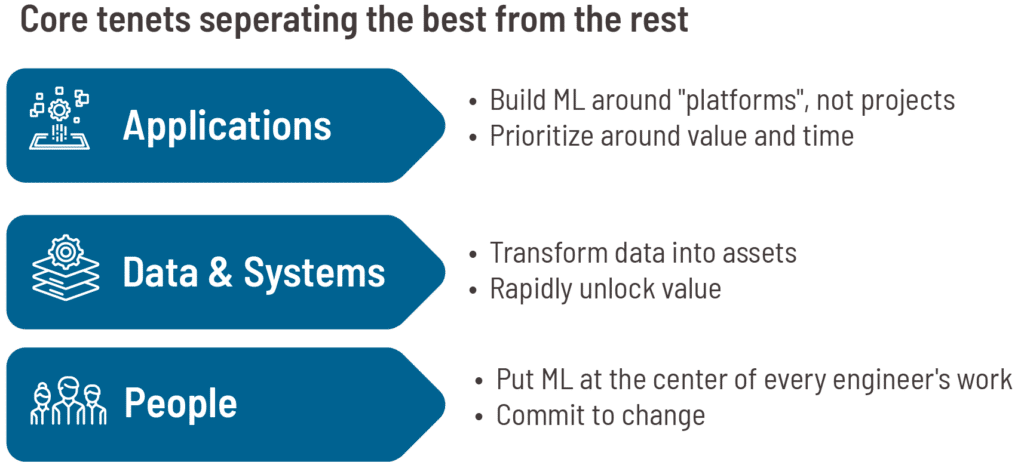
Written by: Josh Green, Citrine Informatics’ Director of Growth
After spending 10 years in the Materials and Chemicals industry across a variety of roles, including portfolio leadership of product development programs, Josh joined Citrine in 2017. He has spent much of his time working directly with customers to realize their ambitions with AI, and now leads Citrine’s Growth team.
Generative AI for Materials and Chemicals Product Development
Generative AI is disrupting and reshaping many industries globally. In the materials and chemicals space, where I’ve spent the last 16 years, the effective deployment of AI (or not) is going to separate the winners from losers and it’s going to happen a lot faster than you think.

The companies and leaders that are doing this right are building on scalable AI platforms where AI models are shared across projects and technology platforms / chassis. This creates a flywheel effect where the AI platform becomes more and more effective at design and as a result product development initiatives continue to get both better and faster. A common pattern we see is that early projects are ~50% faster than their previous benchmarks. Following projects are 70-80% faster and continue to improve from there. We’ve documented customer acceleration as high as 98%! Similar trajectories are typical for customer responsiveness, COGS reduction, personnel onboarding, etc.
Once teams have had a taste of what kinds of outcomes are possible with AI in Product Development, there is no going back. The difference is so stark that leaders couldn’t convince teams to “go back to the old way”, even if they wanted to. No one is doing business with a typewriter today. In fact, several of our customer executives have told us that AI is now a requirement for talent retention.
So, if you are deliberating, postponing the AI decision, thinking of trying to organize all your data up front in a bizarre boil-the-ocean strategy, waiting and seeing (read: doing nothing) — your competition thanks you for the head start.
Not this quarter, but in a few years when leaders’ AI capabilities have exponentially compounded, how well do you expect you can compete?
How do you want to compete in the market? Are you prepared to compete in the market without AI technology when your competition is most likely using it?
Paul W. Mackey, Ph.D. – Vice President of R&D at Huntsman Building Solutions
If you fail to take action, you can rest assured that your successor will not waste time getting such table-stakes technology in place. Doing nothing is no longer an option so, what are your other choices? The first fork in the road is Build vs. Buy. Check out the white paper, Building AI Demands Action, from David Frazee (Former VP of Corporate Research at 3M)

I have seen bespoke homegrown solutions solve a particular problem reasonably well for their company, and there is no doubt that this path can lead to pilot success. But in every case, these approaches have failed to scale. They are necessarily built by experts for a particular problem, but are not designed to tackle the breadth of product design challenges the company faces. In these cases, the scaling flywheel effect is not realized, leveraging AI does not get systemically more efficient and effective, and the overall impact is limited by the bandwidth of specialized experts at the company.
Companies that go down the build path eventually realize (sooner or later) that they need to purchase a purpose-built platform. When you get there, what should you look for in a best-in-class AI platform?
What should you look for in a materials informatics solution?

1 – Scalable
The most impactful applications of AI – market agility, cost optimization, accelerated sustainability, regulatory agility, increased success rate, accelerated innovation, faster troubleshooting, supply chain agility, engineer productivity – all demand scale. This requires:
- true no-code AI, tailored to the needs of product developers, formulators, chemists, and materials scientists,
- reusable AI and data assets, optimized for technology platforms / chassis / portfolios of projects,
- best in class generative design capability – where AI generates unintuitive, never-before-seen candidates {recipes / formulations / sets of inputs} that exceed your targets {properties, cost, regulatory, sustainability} faster than any other approach.
- These capabilities are what allow you to leverage AI to have an outsized impact on your business. There are many details to get right, but don’t get bogged down. Make sure your team is clear on the benefits and focused on the outcomes.
2 – Purpose Built
With the possible exception of your direct competitors, no one in the world has more knowledge about your businesses, applications, and products than you do.
- You need an AI platform that can most effectively leverage the extensive knowledge of your team; use this knowledge to make the most of your data and turn your AI system into a true co-pilot.
- You need a best-in-class data platform to make best use of your invaluable data, including critical metadata to optimize downstream AI performance, regardless of the current state or organization.
3 – Proven
Work with a world-class, experienced team.
- There is no reason to shy away from this reality: evolving your Product Development and R&D functions to be AI-driven across the organization is a large, complicated undertaking requiring thoughtful change-management.
- You need a sane, prioritized plan to get from your current state of data (for almost everyone, this is somewhere between a complete mess and threat-level midnight) to systemic capture and use in AI design workflows.
- There are many ways to fail and significant risk for an organization trying to get everything right the first time (hint: this is impossible).
- Lean on Citrine’s 10 years of experience partnering with customers to bring AI to scale.
4 – Strong Return
Leaders should be laser-focused on the business benefits. There is no reason to deploy AI if it doesn’t impact your business.
- Define and quantify value. Put metrics / tracking mechanisms in place. Reap the rewards.
- I have great news: meaningful impact, FAST, is easy if you know what you’re doing.

Ready to take action?
If you’d like to learn more about how to make world class AI a reality inside of your organization, Contact Us. We’d love to chat.